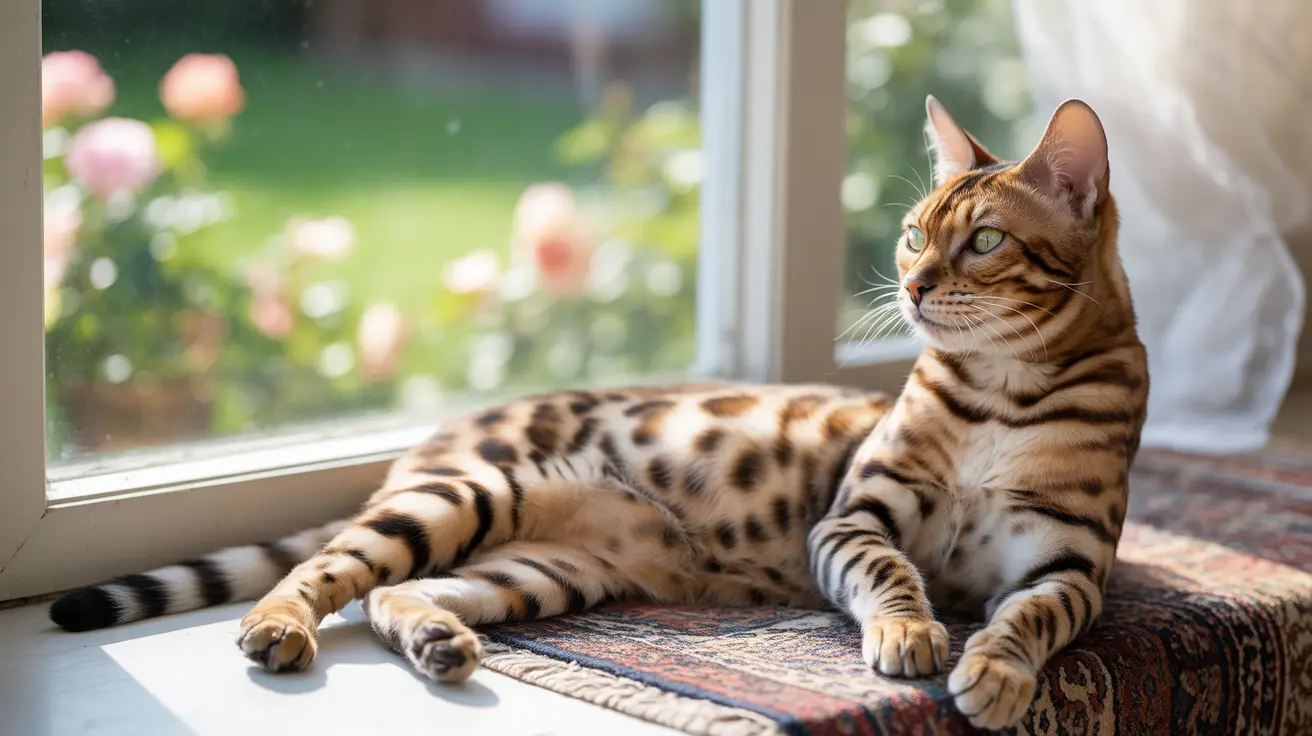For cat enthusiasts and breeders alike, the rosette pattern cat represents one of nature's most striking and sought-after coat designs. These distinctive markings, reminiscent of wild big cats like leopards and jaguars, create an exotic and captivating appearance that sets certain domestic cats apart from their traditionally spotted or striped counterparts.
In this comprehensive guide, we'll explore everything you need to know about rosette patterns in cats, from their genetic origins to the breeds that showcase these remarkable coat designs. Whether you're a potential Bengal owner or simply fascinated by feline genetics, this article will help you understand what makes these patterns so special.
What Makes a Rosette Pattern Unique
Rosette patterns are characterized by clusters of colored spots or markings that feature a darker outer ring surrounding a lighter or contrasting center. Unlike simple spots, rosettes have a multi-layered appearance that creates depth and dimension in a cat's coat. This complex pattern is most prominently displayed in Bengal cats, though it can occasionally appear in other hybrid breeds.
The Genetics Behind Rosette Patterns
The development of rosette patterns involves sophisticated genetic mechanisms, primarily controlled by variations in the agouti gene. This gene determines how pigments are distributed along individual hair shafts, creating the distinctive multi-toned effect that characterizes true rosettes.
Working in conjunction with the tabby gene, these genetic factors produce various pattern types, including the coveted rosette markings. The inheritance of these patterns is complex, often involving multiple genes and modifier effects that influence the final appearance of the coat.
Types of Rosette Patterns
Donut Rosettes
These classic rosettes feature complete circular outlines with lighter centers, closely resembling the markings found on leopards. They are highly prized in show-quality Bengals and represent one of the most recognized rosette variations.
Paw Print Rosettes
These partially open formations create patterns that resemble animal tracks, adding a unique dimension to a cat's coat. They're particularly striking on light-colored backgrounds.
Arrowhead Rosettes
Distinguished by their pointed, triangular shape, arrowhead rosettes are particularly valued in Bengal cats and are thought to be inherited from their wild ancestors.
Clouded Rosettes
These larger, more irregular patterns create a flowing, cloud-like effect across the cat's coat, similar to the markings seen on clouded leopards.
Breeds Known for Rosette Patterns
While the Bengal cat is the most famous breed for displaying rosette patterns, other hybrid breeds may also exhibit similar markings. The Savannah cat and occasionally the Chausie can show spotted patterns that approach true rosettes, though they're generally less defined than those seen in Bengals.
Care and Maintenance
Despite their exotic appearance, cats with rosette patterns require the same basic care as any other domestic cat. Their short coats are generally easy to maintain with regular brushing, and the patterns themselves don't require any special attention to maintain their beauty.
Frequently Asked Questions
What exactly is a rosette pattern on a cat's coat, and how does it differ from regular spots?
A rosette pattern consists of spots with darker outer rings and lighter centers, creating a more complex and dimensional appearance than simple solid spots. These patterns are multi-toned and layered, while regular spots are single-colored markings.
Which cat breeds commonly have rosette patterns, and why are Bengals the most famous for them?
Bengals are the primary breed known for rosette patterns, largely due to their deliberate breeding with Asian Leopard Cats. While Savannahs and Chausies may display similar markings, Bengals have been specifically bred to develop and maintain these distinctive patterns.
How do rosette patterns develop genetically in Bengal cats and other breeds?
Rosette patterns develop through complex genetic interactions, primarily involving the agouti gene and tabby gene. These patterns are inherited through specific genetic combinations and are influenced by multiple modifier genes that affect their final appearance.
What are the different types of rosette patterns seen on Bengal cats, like donut or arrowhead rosettes?
The main types include donut rosettes (complete circles), paw print rosettes (partially open shapes), arrowhead rosettes (triangular shapes), and clouded rosettes (large, irregular patterns). Each type has distinct characteristics and varying degrees of desirability in show cats.
Does having a rosette pattern affect the price or show quality of Bengal cats?
Yes, well-defined rosette patterns significantly impact both the price and show quality of Bengal cats. Cats with clear, symmetrical, and high-contrast rosettes are typically more valuable and score higher in shows than those with less distinct patterns.






